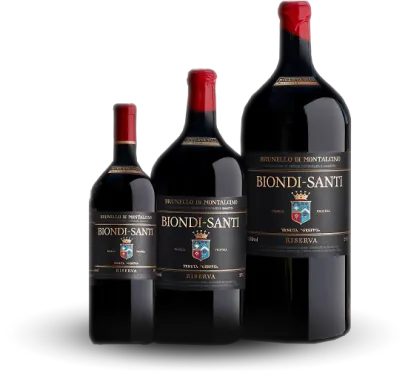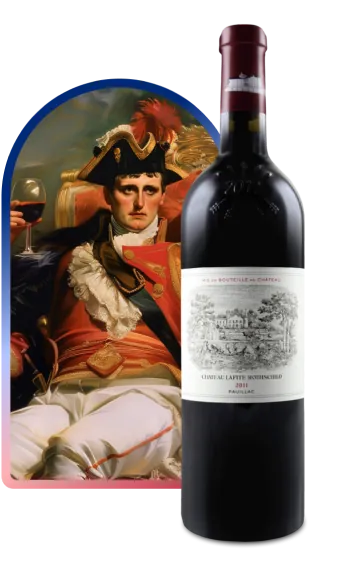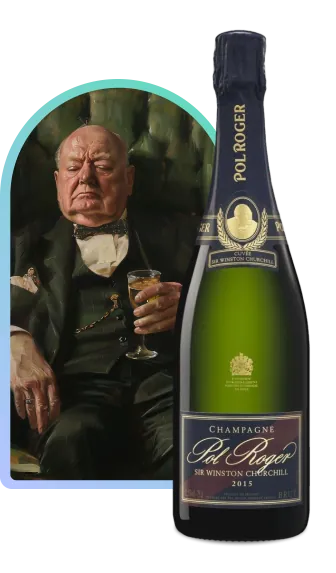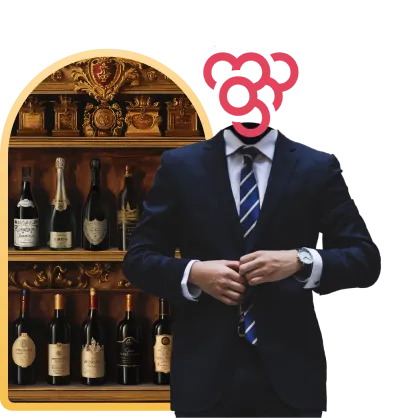Your passion, its value
Flavor, history, and culture mark the notes of a product that increases in value over time, in a market unaffected by inflation.
Start now0.5%
Global production of fine wines
€6 Bln
Global value of the secondary fine wine market
13,000
Bottles available
0.5%
Global production of fine wines
13,000
Bottles available
€6 Bln
Global value of the secondary fine wine market
Wine Over Time
The value of wine grows over the years
It is a limited asset with increasing demand
It is a passionate and tangible asset
Buying fine wines is an investment to pass down
Wine is a safe haven asset
Why collect wine?
The Value of Wine Increases Over Time
The value of wine grows over time: since 2000, the fine wine market has shown an average annual return of 10%, with moderate volatility comparable to gold, the ultimate safe-haven asset.
Source of Diversification
The fine wine market operates independently of traditional financial markets. For this reason, more and more investors are choosing it as a source of portfolio diversification.
Passion and Tangibility
Fine wine is a tangible asset (like real estate, paintings, jewelry...), meaning it is a physical, measurable asset. As a real asset, it has intrinsic value, and its monetary value increases over time.
Why Fine Wines Increase in Value
Collectible wines are the result of centuries-old traditions, key players in the global market, and assets in which to invest for significant medium/long-term returns. They are characterized by:
Growing Demand
With expanding markets, the demand for fine wine increases, and with decreasing availability, its price can skyrocket.
Limited Supply
The most renowned wineries produce a limited number of bottles to preserve excellence. Over time, these bottles are consumed and become harder to find, increasing their desirability and market value.
Qualitative Evolution
Wine is a living product that matures and refines over time, further enhancing its value. This makes it a great long-term investment.
Emotional Dimension
Collecting fine wines symbolizes culture and personal pleasure. The emotional aspect is the foundation of the investment, which withstands financial crises and traditional market dynamics. Fine wine is a luxury product with a demand that remains constant regardless of price changes.




Why Fine Wines Increase in Value
Collectible wines are the result of centuries-old traditions, key players in the global market, and assets to invest in for significant medium/long-term returns. They are characterized by:
Growing Demand
With expanding markets, the demand for fine wine increases, and with decreasing availability, its price can skyrocket.
Limited Supply
The most renowned wineries produce a limited number of bottles to preserve excellence. Over time, these bottles are consumed and become harder to find, increasing their desirability and market value.
Qualitative Evolution
Wine is a living product that matures and refines over time, further enhancing its value. This makes it a great long-term investment.
Emotional Dimension
Collecting fine wines symbolizes culture and personal pleasure. The emotional aspect is the foundation of the investment, which withstands financial crises and traditional market dynamics. Fine wine is a luxury product with a demand that remains constant regardless of price changes.
5 Factors That Define Fine Wines
5 Factors That Define Fine Wines
Origin
The prestige of regions, denomination, and the quality of the vines from which a wine is produced are fundamental factors that can elevate them to fine wine status.
Producer
With a strong reputation and a long history, a winery can increase the recognizability and thus the value of a bottle.
Vintages
These are the vintages that express themselves best throughout the wine's evolution. Awards, ratings, and accolades increase their ability to attract the interest of collectors and enthusiasts.
Authenticity
Guaranteeing the originality of the wine and synonymous with the quality of the bottles, which must come only and directly from producers, official distributors, or reliable merchants.
Critic Ratings
Through competitions, guides, and rating systems, they consecrate the prestige of wines. High ratings increase the value of the bottles.
Every Wine Has Its Story
The origins and journey of fine wines are often marked by innovations and extraordinary circumstances that have contributed to strengthening their legend.

Château Lafite Rothschild
It is the first of the Premier Grands Crus Classés, one of the five chosen in the famous official 1855 classification of Médoc wines.
Lafite's prestige is also reflected in the auction prices of its pre-1900 vintages. The 1869 vintage set a record when it was sold for 163,000 pounds to an Asian buyer in 2010.

Sir Winston Churchill
The first Sir Winston Churchill Pol Roger was produced from the 1975 vintage, released only in magnum format, coinciding with the 10th anniversary of the British politician's death. It was presented in 1984 at Churchill's home in Blenheim Palace. Even today, each new vintage is officially presented by the Maison at the former residence of the great British statesman.

Cristal
Cristal, the first Prestige Cuvée Champagne in history, was created in 1876 to satisfy the refined tastes of Tsar Alexander II. The wine's name came from the Tsar's request that, fearing an assassination attempt, the bottle be made of clear crystal with a flat bottom to prevent poison from being hidden in the indent.

Create your wine cellar with the help of an expert!
Not sure where to start? Our experts are available to answer all your questions and help you create a wine cellar tailored to your needs, supporting you throughout all stages of buying and selling. Book a personalized consultation now.
Experience the emotion of creating a cellar rich in tradition, culture, and passion
Creating a fine wine cellar is an ongoing passion. With eWibe, your collection comes to life, thanks to the shared passion of a growing and interactive community through physical and virtual events.
Learn moreFrequently Asked Questions
Learn more about the platform by reading the answers to the most frequently asked questions.
